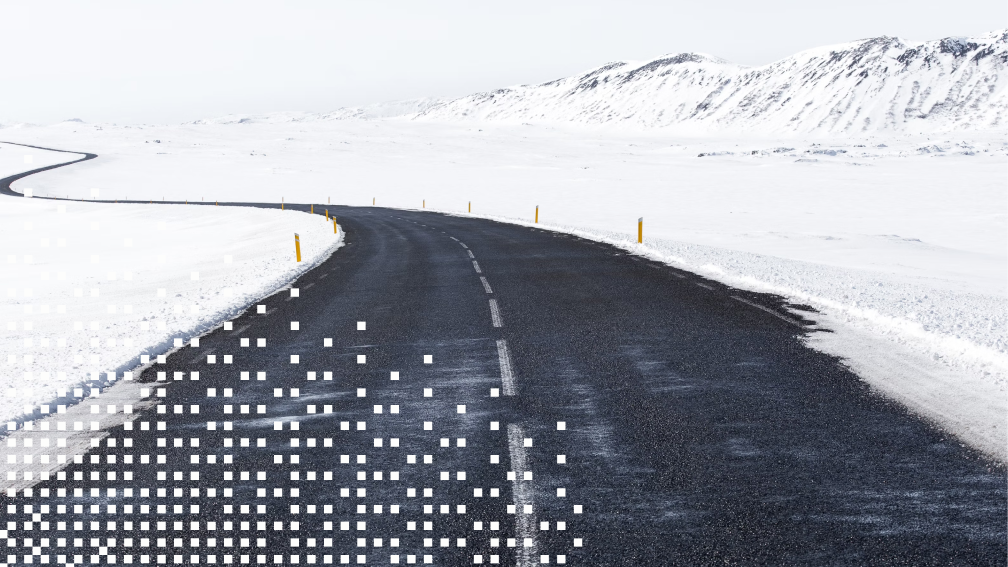
August 5, 2025 • 17 min read
Continuous risk monitoring: Principles, capabilities, and more

Richard Chambers
With compliance requirements only getting tougher, the job isn’t getting any easier. According to PwC’s 2025 Global Compliance Survey, 85% of business leaders say compliance rules have become more complex in just the past three years.
I’ve spoken with risk and compliance leaders who echo this pressure daily. It’s no wonder 61% of compliance professionals now put “keeping up with regulatory change” at the very top of their priority list. That’s a lot to keep up with. When I led audit teams, these headwinds reminded me every day how important it was to rethink risk from the ground up — to have a smarter, more responsive approach.
Continuous risk monitoring bridges the gap between what’s known today and what’s coming next. In my experience, it’s much more than checking dashboards or running end-of-quarter reports; it’s a shift to real-time intelligence, dynamic risk indicators, and early signals that put you ahead of events instead of chasing them. With regulatory, cybersecurity, and strategic risks moving faster than ever, I’ve watched static assessments fall short — leaving organizations exposed at precisely the wrong moment.
What sets leading organizations apart isn’t a longer list of controls or more data — it’s how quickly they translate risk signals into action.
If there’s an advantage I’ve seen up close, it’s this: Building risk awareness into everyday workflows closes the distance between information and response. When you make that shift, risk management no longer lags behind reality; it keeps pace and, sometimes, even sets the tempo.
Principles and capabilities of continuous risk monitoring
Every day brings new headlines, shifting regulations, or a spike in incidents that no dashboard flagged last week. Continuous risk monitoring is built for this reality. I’ve watched programs succeed not because of the volume of data, but because of the ability to read the right signals in context and act before trouble compounds.
To do this well, you need to understand how risk can accelerate or change direction, where to catch the early signs, and how to turn information into practical decisions for your business.
Understanding risk velocity and volatility
Over my years working alongside risk teams, I’ve learned that recognizing the speed and unpredictability of threats fundamentally changes how you respond. Slow-moving risks, like a gradual policy drift or outdated vendor contracts, give you time to adjust. High-velocity risks — think data breaches or regulatory changes — offer little warning, demanding quicker action and stronger early detection. Volatility comes into play when things swing sharply, from sudden market swings to emerging tech or public sentiment shifting overnight.
Teams that track velocity and volatility build sharper playbooks. They know when it’s time to act fast and when to keep watch. This means quicker decisions, tighter prioritization, and fewer surprises.
Internal and external signals: Beyond what’s visible
Risks rarely announce themselves in one clear spot. Risk identification starts with finding early signals that hide in hallway conversations, customer complaints, vendor emails, or news headlines from halfway around the world. The best risk teams scan for fresh signs inside and outside company walls:
Internal signals
- Access logs or user activity spikes
- Incident reports or policy exceptions
- Employee sentiment or feedback
External signals
- Regulatory updates and new legislation
- Competitor moves or industry trends
- Geopolitical changes or market news
Sometimes, it’s a dip in employee engagement. Sometimes, it’s a small change in a regulation. I’ve noticed that when organizations weave these signals together, patterns emerge — like a supplier slowing deliveries right as industry guidance shifts or exception requests flooding in just as new leadership settles in. Connecting the dots helps you act on what’s real, not just what’s loud. That’s how you stay a step ahead of risk.
Dynamic KRIs for proactive risk detection
KRIs function as your risk radar, giving you advance notice before threats materialize into incidents. Static KRIs — metrics set and forgotten — don’t cut it anymore. Today, dynamic KRIs adapt to your risk exposure, tracking live data and growing as your business does.
Modern KRIs might measure:
- Successful and failed login attempts
- Changes in transaction volume or value
- Volume of policy exceptions or overrides
- New device or endpoint connections
- Shifts in regulatory inquiries or audit findings
Choose KRIs that match your top potential risks right now. Don’t only look at last quarter’s numbers; pay attention to the data shaping up this week or this month. As indicators move, they highlight weak spots and prompt fast action . . . sometimes before anyone on the team realizes there’s a problem.
This level of agility frees up energy across your team. When monitoring is woven into daily operations, rather than tacked on as an afterthought, you stop chasing yesterday’s news and start responding to what matters most today.
Tools and strategies for effective monitoring
Continuous risk monitoring works when technology and process fit together. Today’s risk teams need more than spreadsheets and rearview-mirror reports — they need practical monitoring tools that bring together real-time data, highlight the important trends, and help teams act before small issues turn into big problems.
The best approaches mix dashboards, alerts, audit intelligence, and a risk-aware culture to keep decisions grounded but nimble. Here’s what works in practice and how these tools fit into a forward-looking monitoring program.
Dashboards and real-time alerts
Dashboards give teams a living snapshot of risk across the business vs. static charts. They surface activity as it happens: incident spikes, control test results, KRI trends, or new exceptions logged. With real-time alerts layered in, risk managers are notified the moment thresholds are met or potential issues appear. No waiting for month-end to find out what’s changed.
Key benefits include:
- Seeing new risks and control failures immediately
- Prioritizing response based on up-to-date visibility
- Reducing manual report pulls and routine status checks
- Establishing clear metrics for reporting
Audit trends and relationship mapping
The most valuable insights often come from connecting dots others miss. Trend tools show how issues cluster or repeat across audits, highlighting systemic risks instead of isolated incidents. Relationship mapping helps teams track who owns each risk, where responsibilities overlap, and how findings in one unit might signal trouble elsewhere.
Use these approaches to:
- Spot patterns in findings or root causes across time
- Map risk owners and escalation paths for faster follow-up
- Uncover connections between controls and emerging issues
AI and predictive analytics
AI is raising the bar for risk intelligence. Predictive analytics spot where risk might pop up next, like detecting abnormal behavior, forecasting process failures, or flagging hidden compliance gaps. Machine learning models can digest volumes of data from system logs, emails, or case histories and pinpoint early warning signs no human could see alone.
This moves monitoring from “what happened?” to “what might happen next?” so risk teams can:
- Anticipate high-risk scenarios and intervene early
- Sharpen focus on the most likely potential threats
- Prioritize resources with real evidence, not guesswork
Building a risk-aware culture
The best tools fall flat without a team that pays attention. Building a risk-aware culture means risk isn’t seen as someone else’s job. Regular feedback sessions, open reporting channels, and clear accountability keep everyone engaged. When people are encouraged to share concerns, raise red flags, and learn from close calls, your monitoring system catches more, and confidence rises company-wide.
What matters most:
- Training and reminders so risk stays part of the daily routine
- Celebrating when early warnings work (not blaming near-misses)
- Sharing lessons learned to keep the culture moving forward
I’ve seen how combining strong tools with smart processes and a curious team alters continuous monitoring. Suddenly, it becomes a catalyst for progress, not a source of burnout or bureaucracy.
Benefits of continuous monitoring
Building a continuous monitoring program isn’t just about checking another box. It changes how your team handles risk, builds trust, and adapts to new challenges. When risk teams move from static assessments to a continuous approach, momentum shifts. The business can see trouble sooner and respond with more certainty, often before issues become urgent.
Faster response to emerging risks
Continuous monitoring puts your team in a position to catch the earliest signs of change. Instead of waiting for a quarterly review to highlight problems, you see trends as they happen — whether that’s a spike in failed controls, shifts in vendor performance, or changes in regulatory guidance. With that visibility, the response isn’t rushed. Actions are measured, and teams get ahead of issues while there’s still time to solve them.
Stronger executive engagement and visibility
When executives have real-time access to risk data and trends, conversations shift from “What went wrong?” to “What should we do next?” Dashboards and timely alerts make it easier for leadership to weigh priorities, understand trade-offs, and support proactive moves. This transparency not only speeds up informed decision-making but also builds confidence that risk is being managed actively, not just reported after the fact.
Greater resilience and strategic agility
Continuous monitoring gives the business room to adapt. As markets move, new threats emerge, or priorities shift, the organization isn’t left reacting blindly. Instead, teams adjust based on what’s unfolding: fine-tuning controls, reallocating resources, or pivoting strategies with less guesswork and more clarity. This steady feedback loop strengthens your ability to withstand surprises and seize new opportunities as they arise.
I’ve witnessed teams gain clarity, agility, and confidence through steady, incremental improvements in their monitoring. Small wins here compound quickly, making the difference between merely surviving the next disruption and leading through it.
How AuditBoard supports continuous risk monitoring
A true continuous monitoring program demands more than reports — it needs everything risk-related to be connected, visible, and able to move at the pace of the business. AuditBoard's risk solutions bring these essentials together so risk teams can spot, act, and communicate with confidence.
Centralizes dashboards and KRI automation
AuditBoard pulls your key risk indicators (KRIs), real-time metrics, and risk activities into one place. The centralized dashboard provides a live view across functions, making it easy to spot and address issues before they escalate. With automated KRI tracking, you see changes as soon as they happen — no manual pulls or lag between data and decisions.
Integrates issue management and escalation
Issue identification, follow-up, and escalation all live in a single, integrated system. AuditBoard lets teams document findings, assign responsibility, and escalate to the right people, tracking every step from discovery through remediation. Nothing falls through the cracks, and everyone stays on the same page.
Configures workflows across risk functions
Risk management strategies aren’t one-size-fits-all. AuditBoard’s workflow engine adapts to fit compliance, audit, or risk teams, configuring steps, approvals, and processes to match real work. This makes it easy to keep operations running smoothly, even as teams and priorities shift.
Connects first and second line teams
Continuous risk monitoring only works when everyone involved has a voice. AuditBoard provides collaborative spaces, comment threads, and shared action items—so first and second lines work together instead of in silos. Ownership is clear, feedback is fast, and progress moves without bottlenecks.
AuditBoard makes continuous monitoring feel less like a balancing act and more like a team sport. It brings people, data, and process together so your organization stays a step ahead of operational risk that could impact your business goals.
Building continuous monitoring, one step at a time
Continuous risk monitoring doesn’t have to be complicated or overwhelming. The most effective risk management programs start small, building on strengths and letting early progress drive momentum.
Small steps matter. Add a new data source, set up a live alert, or just make it clear who’s in charge of what. Keep making little changes, and soon those old reports start turning into answers you can use.
Having helped organizations at every stage of maturity, I have a bit of advice: Before you try to overhaul everything at once, take stock of what’s working. Pick one or two high-priority risks and start tracking them more closely. Bring the right people together, set clear ownership, and connect your existing tools. A good risk management framework adapts to your business; it doesn’t restrict it.
If you need a starting point, try this practical checklist:
- Assess your current risk view and close the gaps between what’s happening and when you hear about it.
- Choose a starting point with one or two fast-moving risks for early wins.
- Select key signals (metrics or alerts) that keep your team informed in real time.
- Clarify ownership and routines so everyone knows their role in the management process.
- Connect your key systems and let the data flow.
- Test, learn, and refine your approach as the risk environment evolves.
I’ve watched small, steady progress add up faster than anyone expects. Want to see what continuous risk monitoring looks like in action? AuditBoard brings your key risk data into one place, automates your alerts, and helps your team track risk levels with greater precision.
Stay a step ahead. Request a demo and see how AuditBoard can help you build a risk program that’s ready for what’s next.
About the authors

Richard Chambers, CIA, CRMA, CFE, CGAP, is the CEO of Richard F. Chambers & Associates, a global advisory firm for internal audit professionals, and also serves as Senior Advisor, Risk and Audit at AuditBoard. Previously, he served for over a decade as the president and CEO of The Institute of Internal Auditors (IIA). Connect with Richard on LinkedIn.
You may also like to read


Top headlines that defined 2025 for internal auditors

Master your audit playbook: essential steps for internal audit teams

How the C-suite views risks and opportunities in 2026: are internal auditors poised to help?

Top headlines that defined 2025 for internal auditors

Master your audit playbook: essential steps for internal audit teams
Discover why industry leaders choose AuditBoard
SCHEDULE A DEMO



